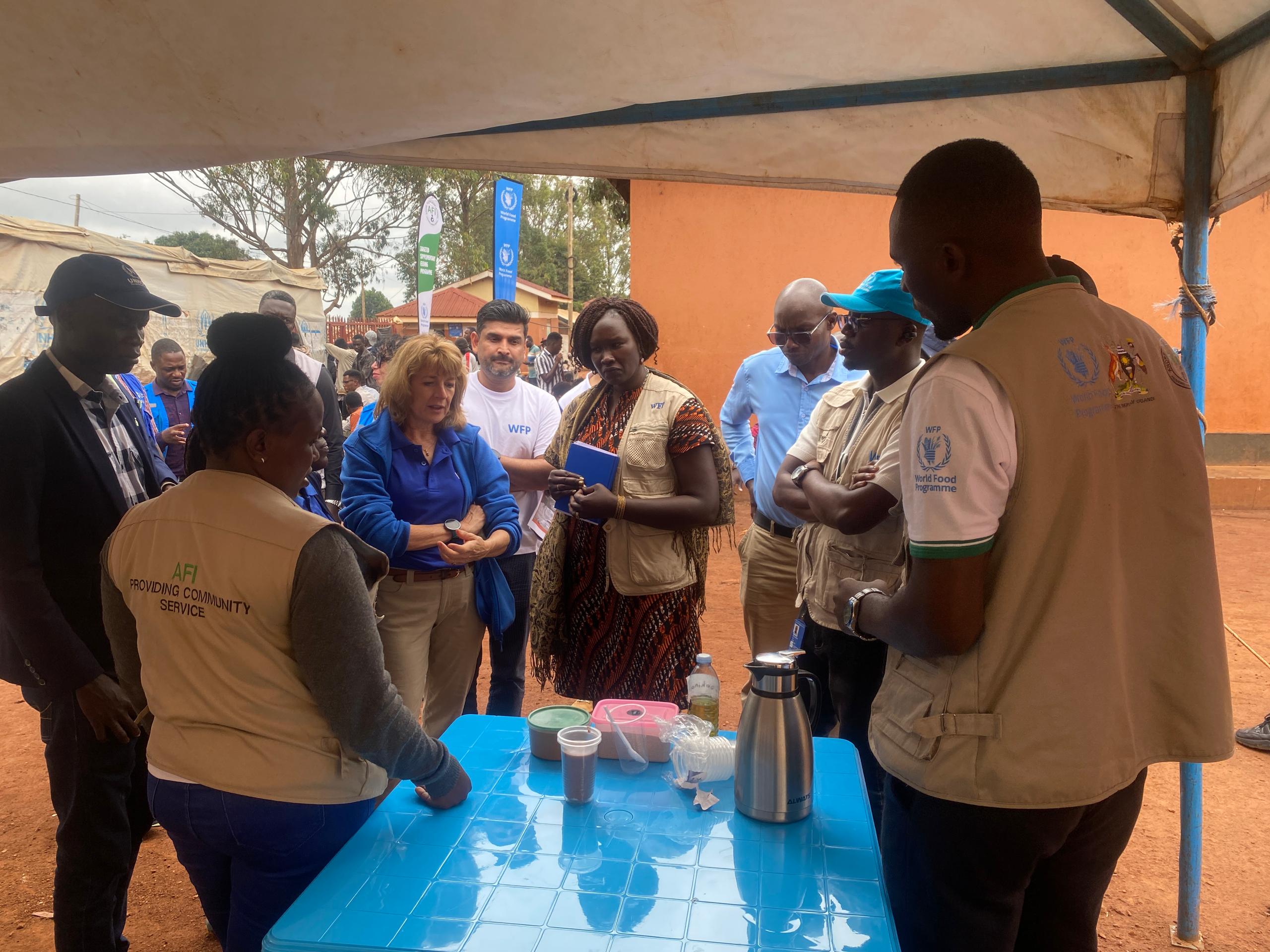
Studies conducted by AFI
- Mid-Upper Arm Circumference (MUAC) as a practical alternative to Body Mass Index (BMI) for diagnosing overweight and obesity in adults
This study investigates the use of Mid-Upper Arm Circumference (MUAC) as a practical alternative to Body Mass Index (BMI) for diagnosing overweight and obesity in adults, particularly in resource-limited settings. Conducted at the University of Juba, South Sudan, the research analyzed anthropometric data from 251 adults and found a strong positive correlation between MUAC and BMI (r = 0.8621, p < 0.0001). Using Receiver Operating Characteristic (ROC) curve analysis, the study identified optimal MUAC cut-offs: ≤25.4 cm for underweight, 25.4–<30.1 cm for normal weight, 30.1–<31.1 cm for overweight, and ≥31.1 cm for obesity. MUAC demonstrated high diagnostic accuracy, with 100% sensitivity for obesity and 90% for overweight, suggesting it is a reliable, low-cost, and easy-to-use tool for nutritional assessment in adult populations where BMI measurement is impractical.
Amegovu, A. K., Chewere, T., Jokudu, S., & Mawadri, M. (2020). Mid-upper arm circumference (MUAC) cut-offs to diagnose overweight and obesity among adults. Journal of Clinical & Community Medicine, 2(3). https://doi.org/10.32474/JCCM.2020.02.000138
- Challenges and lessons learned from the implementation of nutrition specific program – An NGO perspective
Despite extensive nutrition-specific interventions by NGOs and UN agencies, the lack of integration with nutrition-sensitive approaches—targeting infrastructure, education, food access, and health systems—has led to high relapse rates and stagnant stunting levels. AFI argues that current treatment-focused models are unsustainable and advocate for a paradigm shift toward preventive, multi-sectoral strategies that address the root causes of malnutrition. Drawing on nutrition data from 2009 to 2017 and field experience, the paper emphasizes that bridging the gap between treatment and prevention is essential for long-term impact, especially in resource-constrained and vulnerable communities.
Amegovu, A., & Chewere, T. (2018, June 18–19). Challenges and lessons learned from the implementation of nutrition specific program – An NGO perspective. Presented at the World Congress on Nutrition and Dietetics, Paris, France. Journal of Clinical Nutrition & Dietetics, 4. https://doi.org/10.4172/2472-1921-C1-002
- Variance between screening my MUAC and WFH Zscore
This study, conducted in Moroto district, Uganda, evaluated the effectiveness and time sensitivity of two anthropometric measures—Mid-Upper Arm Circumference (MUAC) and Weight-for-Height Z-score (WHZ)—in screening, admitting, monitoring, and discharging moderately malnourished children aged 6–59 months enrolled in a supplementary feeding program. Among 181 children admitted, MUAC identified more cases than WHZ, with 56.4% of MUAC-defined cases not qualifying under WHZ criteria, highlighting MUAC’s higher sensitivity but lower specificity. Despite this discrepancy, both measures showed similar recovery times (average 43 days), and MUAC proved effective for follow-up and discharge, with 59% of children reaching recovery thresholds compared to 41% under WHZ. The study concludes that MUAC can serve as a standalone tool for managing moderate acute malnutrition, especially in resource-limited settings with high stunting prevalence.
Amegovu, A. K., Mawadri, M., Chewere, T., & Irumba, J. (2016). Variation in time and sensitivity of anthropometric measures of MUAC and WFH/WFL Z-score for screening, admission to follow up and discharge of moderately malnourished children 6–59 months on supplementary feeding program. Food Science and Nutrition Technology, 1(2), Article 000109.
- Nutrition and Profiling indigenous foods
This study investigates the nutritional and microbial profiles of a locally consumed blend of Balanites aegyptiaca leaves and sorghum beer residue (adakai) in Uganda’s Karamoja sub-region, where food insecurity affects nearly half of households. The analysis reveals that while both ingredients offer similar levels of protein, energy, and potassium, sorghum beer residue is richer in carbohydrates, fat, calcium, and zinc, whereas B. aegyptiaca leaves contribute significantly more iron and ash. Blending the two enhances the overall nutrient density, particularly micronutrients critical for immunity and blood health, making the mix a valuable dietary supplement during lean seasons. Microbial analysis showed low levels of aflatoxins and no salmonella, though mesophilic bacteria were present, with blending slightly reducing their count. The findings support the promotion of this blend as a culturally accepted, nutrient-rich food option for vulnerable communities, especially children and women of reproductive age.
- METU-1
Formulation: This study evaluates the nutritional adequacy of a locally formulated sorghum-peanut blend (SPB) compared to the traditional corn-soy blend (CSB) for treating moderate acute malnutrition (MAM) in Ugandan children aged 6–59 months. Using linear programming via Nutrisurvey software, SPB was developed from sorghum, peanuts, honey, and ghee sourced from Karamoja. Both SPB and CSB met recommended nutrient thresholds, with SPB offering higher fat and energy content, while CSB had more protein and minerals like iron and zinc. Anti-nutrient levels in both were within safe limits. The findings support SPB as a viable, locally sourced alternative for MAM recovery.
Amegovu, A. K., Ogwok, P., Ochola, S., Yiga, P., Musalima, J. H., & Mutenyo, E. (2013). Formulation of sorghum-peanut blend using linear programming for treatment of moderate acute malnutrition in Uganda. Journal of Food Chemistry and Nutrition, 1(2), 67–77. ESci Journals Publishing. http://www.escijournals.net/JFCN
Acceptability: This study assessed the sensory acceptability of Sorghum Peanut Blend (SPB), a locally formulated food, compared to the traditional Corn Soy Blend Plus (CSB+) among children with moderate acute malnutrition in Karamoja, Uganda. Both supplements were well accepted, with over 98% of rations consumed during the two-week trial and no adverse reactions reported. While CSB+ scored slightly higher in taste, SPB matched CSB+ in aroma, consistency, and overall acceptability. Mothers found both porridges easy to prepare and beneficial for their children’s recovery, affirming SPB as a viable, culturally appropriate alternative during food aid gaps.
Amegovu, A. K., Ogwok, P., Ochola, S., Yiga, P., Musalima, J., & Juliana, M. (2014). Sensory Acceptability of Sorghum Peanut Blend (SPB) and Corn Soy Blend Plus (CSB+) by Young Children with Moderate Acute Malnutrition in Karamoja, Uganda. Journal of Food Research, 3(2).
Efficacy: This randomized trial evaluated the efficacy of Sorghum Peanut Blend (SPB) versus Corn Soy Blend Plus (CSB+) in treating moderate acute malnutrition (MAM) among children aged 6–59 months in Karamoja, Uganda. Both supplements met Sphere Standards, with SPB showing a slightly higher recovery rate (82.3%) than CSB+ (76.8%), though not statistically significant. However, children on SPB recovered faster, with a median of 43 days compared to 57 days for CSB+. SPB, made from locally available sorghum, peanuts, ghee, and honey, proved to be a viable, culturally appropriate, and cost-effective alternative to CSB+ for MAM rehabilitation.
Amegovu, A. K., Ochola, S., Ogwok, P., Yiga, P., Musalima, J., & Juliana, M. (2014). Efficacy of Sorghum Peanut Blend and Corn Soy Blend Plus in the Treatment of Moderate Acute Malnutrition in Children Aged 6–59 Months in Karamoja, Uganda: A Cluster Randomized Trial. Nutrition and Dietary Supplements, 6, 75–84. https://doi.org/10.2147/NDS.S64720.
- METU-2
This study evaluates the nutritional and anti-nutritional profile of METU-2, a locally formulated therapeutic food made from sorghum, peanut, honey, and ghee, designed to treat severe acute malnutrition (SAM) in Uganda’s Karamoja region. Compared to Plumpy-nut, METU-2 demonstrated comparable protein and energy levels (528 kcal/100g vs. 509 kcal), higher fat content, and adequate essential fatty acids, though it had lower levels of vitamin A, zinc, and potassium. While METU-2 showed higher levels of anti-nutrients like phytates, tannins, and trypsin inhibitors, its aflatoxin levels remained within safe limits. The findings suggest METU-2 is a culturally acceptable, locally sourced alternative to commercial RUTFs, with potential for community-based SAM management, though further efficacy studies are recommended.
Amegovu, A. K., Yiga, P., Kuorwel, K. K., & Chewere, T. (2023). Nutrient and Anti-nutrient Profile of a Local Formula from Sorghum, Peanut, Honey and Ghee (METU-2) for Treatment of Severe Acute Malnutrition. University of Juba, School of Applied Science.
